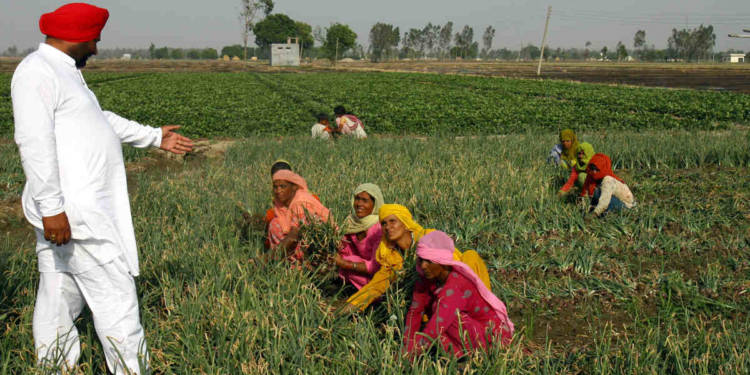Almost five decades after the Green revolution, which increased the farmer’s income manifold, the government has still put the agricultural income in tax-exempt category under Section 10(1) of the Income Tax Act, 1961. The agricultural income is tax-exempt with any limit, which means even an individual is earning in crores through agricultural; she/he is not liable to any taxes.
This has left a big black hole in our tax net. The non-salaries class, majority of who earn through business/work in unorganized sector, shows the income as agricultural income even if it is not, given the benefits of tax exemption.
This has also led to overestimation of the people employed in the agriculture sector. It is estimated that 14.5 crore families of the country depend on agriculture, which translates into more than 70 crore people being dependent on agriculture, as the average family in India is of 5 people. This is simply not true!
Majority of the people who show agriculture as a profession, are employed in various different profession in the informal sector including in highly skilled professionals like teacher, businessperson. But, these people officially show agriculture as a profession for two simple reasons with the first being benefits central and state governments announce every year for agriculturalists and the second being they are employed in the unorganized sector.
As the official data, the union and state government spend more than 5 lakh crore rupees on agricultural subsidies every year, which accounts for almost 10 per cent of the combined expenditure.
In order to appease the farmers and fearing the backlash from the community; the central government has kept the farmers outside the purview of Income-tax. In the last five decades, every government mooted the idea of imposing a tax on agricultural income but, the fear of losing political capital has become blockage is the implementation of the decision every time.
The inability to impose tax on agriculture has led to massive inequities in the collection of direct taxes. The states which are dependent on agriculture contribute a negligible sum in overall tax collection because agricultural income is outside the tax net.
Even the rich states like Punjab and Haryana, which have one of the highest per capita income in the country, contribute very little to the net direct tax collection.
As per the latest data from the Income Tax (IT) department, the state of Uttar Pradesh with 16.50 per cent of country’s population contributes only 4 per cent in the total IT collection. Maharashtra with 9.28 per cent of the population contributes 39.9 per cent of total IT collection.
The income tax share of other states with large populations is at a dismal rate. Bihar constitutes for 8.60 per cent of the total population of India, but it is not even in the top 10 of highest income tax paying states.
In many states like Punjab, Haryana, Maharashtra; the farmers are immensely rich. Even if we look at all India scale, there are many rich farmers with many hundred acres of land and, at the same time, there are lakhs of poor farmers in every state. Therefore, while the subsidies to poor farmers are necessary, bringing the rich farmers under the tax net is also required. There are thousands of farmers who have hundreds of acres of land, and whose income runs into crores of rupees; these farmers must be taxed for the welfare of poor farmers.
Given the kind of political capital it requires, only Modi government can be entrusted with such provisions. The Modi government was elected with even larger majority in 2019, despite steps like demonetization, GST, and IBC, which require massive political capital. Therefore, if the Modi government can go for such bold reforms in the previous term and get reelected with even larger majority; it can also afford path-breaking step like taxing the agricultural income.


































